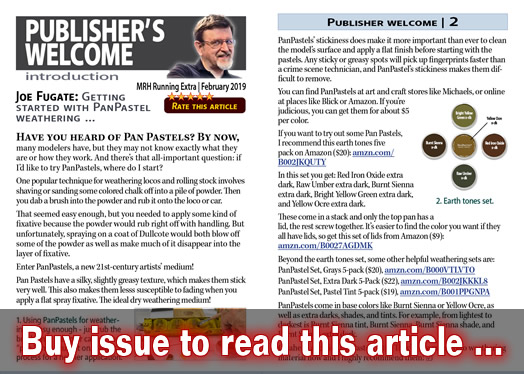Tools, tips and tricks

TUTORIAL: YouTube: Building a Showcase Miniatures N Scale Signal Kit - Part 2 Section 2
Part 2 (section 2) of my tutorial on building an N Scale Signal Kit by Showcase Miniatures. In Section 2, I show you how I install the LED, complete adding the final parts of the signal and paint the signal ready for mounting on the layout.
In Part 3 of my tutorial I will show you how I add resistors and test the LED and finally how I mount the signal on the layout.

TUTORIAL: YouTube: Building a Showcase Miniatures N Scale Signal Kit - Part 2 Section 1
Part 2 (Section 1) of my tutorial on building an N Scale Signal Kit by Showcase Miniatures. Follow along as I start my build of a single head block signal, showing you how I assemble the kit.
This video is in 2 sections - in Section 1 I show you how to remove and clean the parts, then how to assemble the signal.
In Section 2, coming in the next two days, I will show you how I install the LED, complete adding the final parts of the signal and paint the signal ready for mounting on the layout.

JMRI - decoder programming "best practice" question
I am about to start programming a Tsunami 2 1100 sound decoder and I have a question about what is "best practice" when using JMRI on a brand new decoder.
Can I assume that JMRI has the "correct" defaults pre-loaded, or should I load all sheets from the new decoder before I start changing CV values?
Thanks in anticipation ......
Rob Clark

Casting Resin Gondola Cars
I updated my website with a detailed description of how I cast resin gondola cars.
https://wnbranch.com/resin-casting-gondola-cars/


SMA32 - JMRI Does DC ! …with up to 4-8 WiFi or JMRI DC Cabs
There are many modelers who for various reasons, use DC throttles to control the locos and trains on their layouts. What if you could combine the simplicity of a DC throttle with the sophistication of JMRI control, signaling, sensors, and even WiFi throttles? Yup! WiFi throttles for DC train control! …and what if you could put such layout control together for less than the cost of an old dual throttle power pack? Interested? Let’s see how it can be done!

SMA31 - 15 Amps Plus of Raw Power for DCC++
Every once in a while there is a need for something a bit more than the 1-2 Amps of DCC power that the typical DCC++ combination of the Arduino plus motor shield can deliver. With a separate H-Bridge driver board and your Arduino Uno or Mega2560 you can put out a DCC signal with 15 Amps of power. Let’s see how you can do it.
>> Posts index
Navigation
Journals/Blogs
Recent Blog posts:



